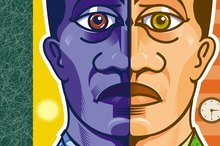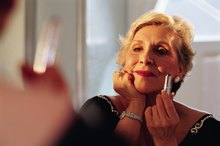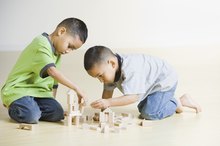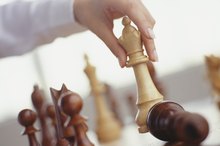Social Learning Theory in Children
There are many avenues to learning, but perhaps one of the most direct is simple observation. Kids learn best by example, whether it’s a toddler imitating Mommy talking on the phone or a high schooler picking up new slang words from his friends. Social learning theory holds that people learn by observing the examples of those around them, both good and bad.
General Principles
Social learning theory focuses on learning that occurs within a social context, meaning that people learn from observing, imitating or modeling others. According to J.E. Ormrod’s book, “Human Learning,” people can learn by observing the behaviors of others and the outcomes of those behaviors 1.
Reinforcements
Definition of Proactive Aggression
Learn More
Social learning theory also concentrates on the rewards, or reinforcements, that we receive for behaviors. Reinforcements could be concrete objects or praise, or more abstract things like a reduction of tension or increased self-esteem, according to Margaret Delores Isom, professor of criminology at Florida State University. Reinforcements or punishments that result from learned behaviors have a major effect on the behaviors that people exhibit. For example, a student who changes how he dresses to fit in with a certain crowd has a good chance of being accepted and thus reinforced by that crowd. The same idea applies to punishments.
- Social learning theory also concentrates on the rewards, or reinforcements, that we receive for behaviors.
- Reinforcements could be concrete objects or praise, or more abstract things like a reduction of tension or increased self-esteem, according to Margaret Delores Isom, professor of criminology at Florida State University.
Theories about Aggression
The man behind social learning theory, Albert Bandura, believed that aggression was a socially learned behavior. He claimed that kids learn to be aggressive by watching the violent actions of family members, friends or the media. In one of his studies, children watched a video of a model hitting an inflated clown doll. One group of children saw the model being praised for his behavior, and, without being told to do so, that group of kids also began to hit the doll.
- The man behind social learning theory, Albert Bandura, believed that aggression was a socially learned behavior.
- He claimed that kids learn to be aggressive by watching the violent actions of family members, friends or the media.
Practical Applications
Theory of Planned Behavior & Smoking
Learn More
Many behaviors, good and bad, can be learned through modeling. Parents and teachers can take advantage of social learning theory by providing kids with examples of desired behaviors, or modeling. According to Ormrod, examples of behaviors that can be learned through modeling are reading, demonstrations of math problems, and even bravery or courtesy. Moral thinking is also influenced by observation and modeling. Kids learn how to choose between right and wrong by watching adults make these decisions.
- Many behaviors, good and bad, can be learned through modeling.
- Parents and teachers can take advantage of social learning theory by providing kids with examples of desired behaviors, or modeling.
Conditions for Modeling
Ormrod writes that four conditions are necessary before an individual can successfully model the behavior of someone else. First, the individual must pay attention to the model. He must also be able to remember the behavior that has been observed, which is made easier with repetition. Third, he must be ready developmentally and physically to replicate the action, which is important to remember when trying to teach very small children. Finally, he must have motivation; he must want to demonstrate what he’s learned.
- Ormrod writes that four conditions are necessary before an individual can successfully model the behavior of someone else.
- He must also be able to remember the behavior that has been observed, which is made easier with repetition.
Related Articles
References
- "Human Learning"; J.E. Ormrod; 1999
- Fryling MJ, Johnston C, Hayes LJ. Understanding Observational Learning: An Interbehavioral Approach. Anal Verbal Behav. 2011;27(1):191-203. doi:10.1007/bf03393102
- Hammer TR. Social Learning Theory. In: Goldstein S, Naglieri JA. Encyclopedia of Child Behavior and Development. San Francisco: Springer; 2011. doi:10.1007/978-0-387-79061-9_2695
- Overskeid G. Do We Need the Environment to Explain Operant Behavior? Front Psychol. 2018;9:373. doi:10.3389/fpsyg.2018.00373
- Bandura A. Social Learning Theory. Englewood Cliffs: Prentice-Hall; 1977.
- Nguyen Do LLT. Bobo Doll Experiment. In: Goldstein S, Naglieri JA. Encyclopedia of Child Behavior and Development. San Francisco: Springer; 2011. doi:10.1007/978-0-387-79061-9_379
- Bajcar EA, Bąbel P. How Does Observational Learning Produce Placebo Effects? A Model Integrating Research Findings. Front Psychol. 2018;9:2041. doi:10.3389/fpsyg.2018.02041
- Cook DA, Artino AR. Motivation to learn: an overview of contemporary theories. Med Educ. 2016;50(10):997-1014. doi:10.1111/medu.13074
- Bajcar EA, Bąbel P. How Does Observational Learning Produce Placebo Effects? A Model Integrating Research Findings. Front Psychol. 2018;9:2041. doi:10.3389/fpsyg.2018.02041
- Bandura A. Social Learning Theory. Englewood Cliffs: Prentice-Hall; 1977
- Cook DA, Artino AR. Motivation to learn: an overview of contemporary theories. Med Educ. 2016;50(10):997-1014. doi:10.1111/medu.13074
- Fryling MJ, Johnston C, Hayes LJ. Understanding Observational Learning: An Interbehavioral Approach. Anal Verbal Behav. 2011;27(1):191-203. doi:10.1007/bf03393102
- Hammer TR. Social Learning Theory. In: Goldstein S, Naglieri JA. Encyclopedia of Child Behavior and Development. San Francisco: Springer; 2011. doi:10.1007/978-0-387-79061-9
- Nguyen Do LLT. Bobo Doll Experiment. In: Goldstein S, Naglieri JA. Encyclopedia of Child Behavior and Development. San Francisco: Springer; 2011. doi:10.1007/978-0-387-79061-9_379
- Overskeid G. Do We Need the Environment to Explain Operant Behavior?. Front Psychol. 2018;9:373. doi:10.3389/fpsyg.2018.00373
Writer Bio
Amanda Hermes has been a freelance writer since 2009. She writes about children's health, green living and healthy eating for various websites. She has also been published on EdutainingKids.com, Parents Tips Blog and Weekly Woof Blog and she has worked as a ghostwriter for parenting articles. She holds a Bachelor of Arts in English from the University of North Texas.









